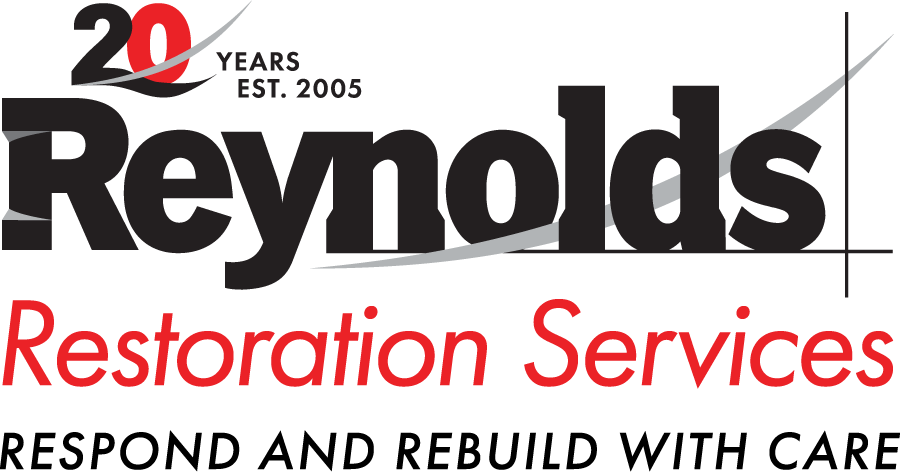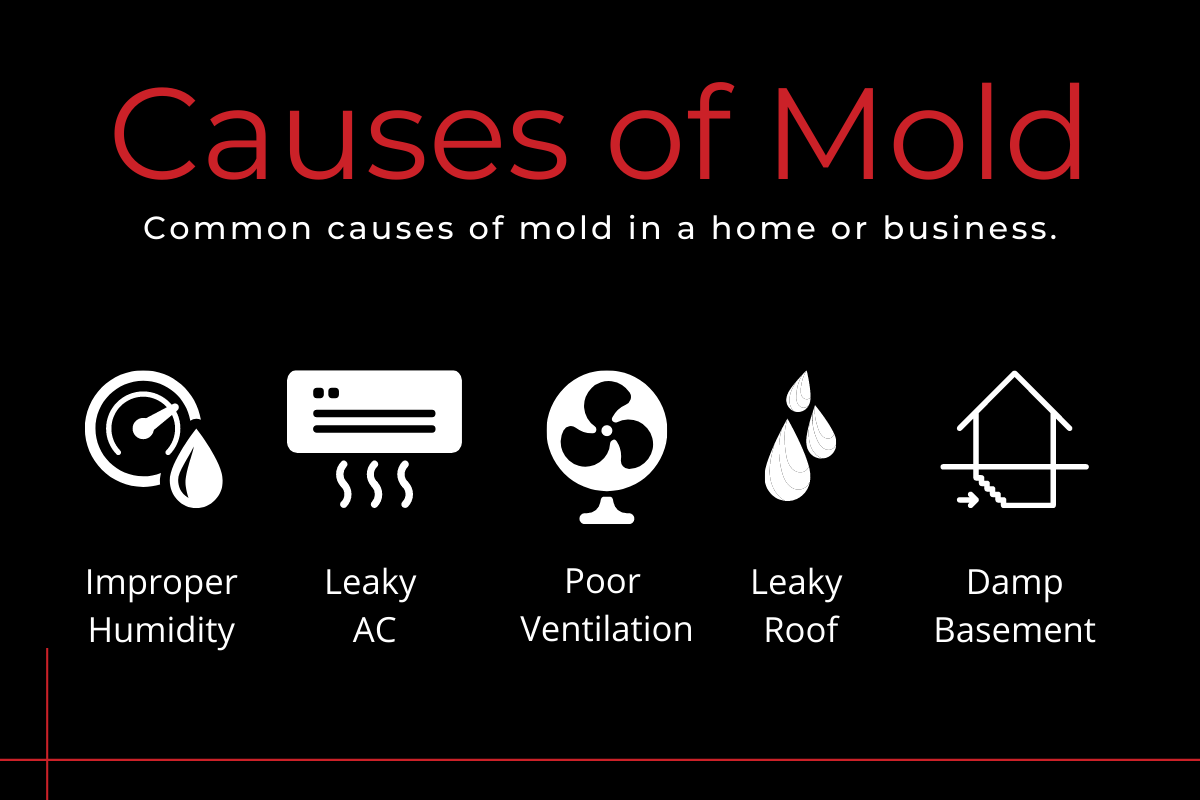
What are the Common Types of Mold?
There are many different types of mold. Mold types most commonly found in a home or building are:
- Acremonium: Acremonium is a slow-growing mold that is usually noticeable by its unpleasant odor. Acremonium mold grows inside of water-damaged drywall and insulation.
- Aspergillus: Aspergillus is a common type of mold found both inside and outside the home. When this type of mold is inside a building, it grows and develops on damp walls and surfaces. Decaying plants, dead leaves, and compost piles are other sources of Aspergillus mold. While this mold is generally not harmful to humans, some people who ingest aspergillus can develop a severe allergic reaction or allergy called Aspergillosis.
- Aureobasidium: Aureobasidium is an allergenic mold that hides behind wallpaper, on painted surfaces or on wood walls or trim. Aureobasidium is pink, brown or black color.
- Cladosporium: Like most other mold types, Cladosporium is found in indoor and outdoor environments where moisture is present. It usually grows in clusters of black, yellow, or green spots. Common areas of the home where Cladosporium can be found are basements, bathrooms, sinks, attics, curtains, furniture and around faucets.
- Chaetomium: Chaetomium is a common mold in water-damaged homes or buildings. It changes colors from white, to gray, and eventually to black, and can spread across large areas. Chaetomium mold thrives in leaky roofs, basements and bathrooms and has a musty odor.
- Fusarium: While fusarium is common both indoors and outdoors, it is primarily a fungus or mold found in soils and affects plants and crops. Fusarium can spread from indoor plants to areas such as carpets and flooring, drywall, basements, and other areas with high humidity.
- Penicillin: Penicillin is probably the most well-known mold, due to its medicinal benefits when used as an antibiotic. Penicillin usually grows on decaying and old food, but can also be found on wallpaper, carpet, paint, fabrics and generally in water-damaged buildings.
- Stachybotrys chartarum: Stachybotrys chartarum is more commonly known as black mold or toxic mold. This type of mold can cause stress to homeowners, as it’s linked to health issues and can cause structural damages. It is most often detected in damp or water damaged buildings. Black mold grows in any room of a home including basements, bathrooms, kitchens and attics. Black mold can spread quickly.
- Ulocladium: Ulocladium mold is identified by its brown, gray or black color. While primarily a type of mold associated with plants and vegetation, it can grow on water-damaged materials in a home such as wet carpets and other wet surfaces.
Causes of Mold
Water and moisture are the main causes of mold growth in a home or business. Mold needs warm, damp spaces to thrive, which is why molds develop in basements and bathrooms. Areas of a home that are “out of sight” such as inside drywall and in crawl spaces are also prime areas of mold growth. Some common causes of mold are:
- Humidity: Humidity or dampness in the air can supply enough water vapor or moisture for mold to grow. Lower humidity is ideal to keep mold from growing, and indoor humidity should be kept below 60% and ideally between 30-50%.
- Leaky air conditioners: Air conditioning units, both stand alone and part of an HVAC system, are often a cause of mold growth. When an air conditioner is operating, it creates moisture to cool the air for a space. This moisture can feed mold growth if not addressed quickly.
- Poorly ventilated spaces: Poor ventilation in your home is one of the leading reasons for mold growth. If moisture is not properly ventilated in a home, the air can become stagnant and create the optimal environment for mold. Bathroom fans and exhausts are one feature of homes that is designed to help prevent mold growth for this specific reason.
- Leaking roof: Leaking roofs can be a headache for homeowners, especially when water leaking through a roof starts to penetrate drywall and other building materials.
- Damp basement: Many homeowners have experienced mold growth in a damp basement – this is the most common place for mold to start to grow and spread in a home. Older homes are at a higher risk, as aging foundations can start to crack allowing moisture from the outside to creep into a basement.
How Do Types of Mold Affect Health?
Many people are allergic to mold and experience symptoms if exposed to mold and black mold. Some people can develop respiratory symptoms, and irritations to their eyes, nose, throat, or skin. The most common health affects and symptoms of mold exposure include:
- Dermatitis
- Hay fever
- Lung inflammation
- Asthma
- Nasal stuffiness
- Throat irritation
- Eye irritation
People with underlying health conditions such as asthma are particularly at risk to experience health issues related to mold.
Professional Mold Removal
Small areas of mold growth and infestation may be able to be removed using common home cleaners, but sometimes it is better to have a professional like Reynolds Restoration Services remove mold. Professionals have the proper equipment, tools and resources to be able to remove mold and help improve a home or business to prevent future mold growth.
Learn About Our Mold Removal Services
At Reynolds Restoration Services, our team of restoration specialists uses commercial-grade mold removal products. The products are non-toxic and safe for homeowners and their families (including pets). Our approach to mold removal includes:
- Wipe/sanitize all services using a non-toxic EPA approved product.
- Clean fabrics with a HepaVAC. A HepaVAC is different from a standard vacuum and contains filters to trap and remove small particles like mold spores.
- “Scrub” air to remove mold spores using an air scrubber. An air scrubber is a portable filtration system that removes particles and mold from the air.
- If necessary, removal and demo of mold damaged materials.
How We Can Help Remove Any Type of Mold
Although mold can be a nuisance and cause home and business owners stress, it can be removed and prevented. If you have a mold issue, reach out to Reynolds Restoration Services today to start mold clean up and removal. For 15 years, home and business owners in Harrisburg, PA, Philadelphia, PA, and the Baltimore/DC Metro area have trusted us for their emergency restoration needs. We can safely and quickly restore homes and businesses to their pre-loss condition after a fire, storm, water or mold related emergency.

President of Reynolds Restoration Services. Over 20 years of experience in the emergency restoration industry.


